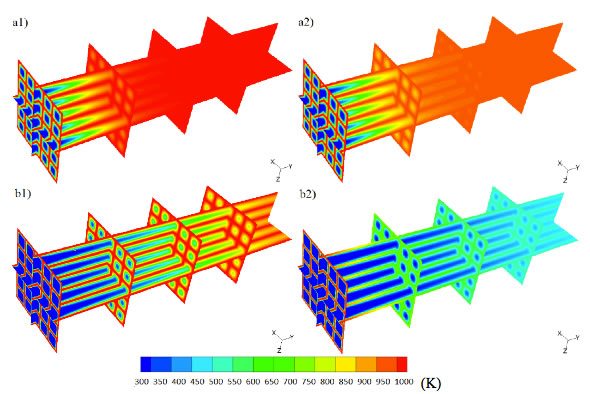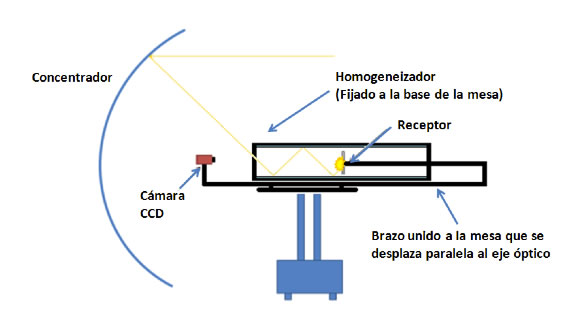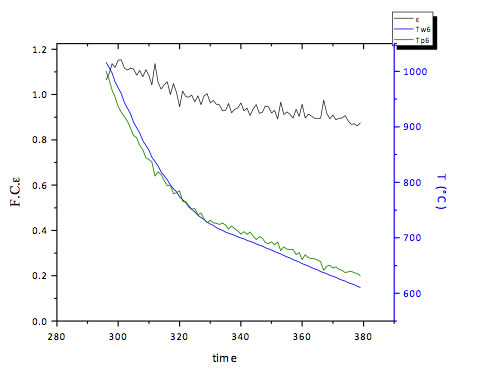Mostrando artículos por etiqueta: ANES CIES
Transferencia de calor en receptores volumétricos para sistemas de energía solar térmica
Norma Rodríguez-Muñoz, N. A., Carlos A. Pérez-Rábago, Fernando Hinojosa-Palafox, Claudio A. Estrada.
Abstract

In the solar central tower systems, receivers that allow the absorption of concentrated sunlight are used to transfer thermal energy into a fluid. In the design of solar thermal receivers, several aspects are to be considered: reliability of the material surface, efficient heat transfer and the reduction of thermal losses. Therefore, volumetric thermal receivers have great potential for the production of thermal energy and have become an attractive option. This study numerically analyzes behavior of temperature and velocity profiles in a volumetric receiver. Temperature and velocity fields in several depths of the receiver are analyzed; this study provides preliminary results useful for a future experimental study. A parametric study of effects such a variation of velocity at the inlet of the receptor and two different boundary conditions are presented.
Transferencia de calor en receptores volumétricos para sistemas de energía solar térmica
Diseño y caracterización de prototipos de homogeneizadores de alto flujo radiativo para el HoSIER
E. Anguera, R. Pérez-Enciso, C.A. Pérez-Rábago, Arancibia-Bulnes C.A., C.A. Estrada
Abstract

The evaluation of the first prototypes of radiative flux homogenizers, for concentration photovoltaic applications, were tested in the High Flux Solar Furnace (HoSIER), at the Institute of Renewable Energies at UNAM. As a part of the design, homogenizers were modeled and simulated with distinct geometries for a variable length, through the ray trace software SOLTRACE. A square were selected as a transversal area of the homogenizer, since it presents the best uniformity value in the distribution of radiative flux intensities for a target placed at 1m of distance from the focus. In order to corroborate the computational experiments two hollows homogenizers with square transversal area sand reflective interior walls were built, one with front surface mirrors and the other with back surface mirrors both of 50 cm of length, and they were characterized taking pictures with a CCD camera, by scanning the length.
Diseño y caracterización de prototipos de homogeneizadores de alto flujo radiativo para el HoSIER
Síntesis de carburos de silicio con energía solar concentrada en el horno solar HoSIER
Ceballos-Mendivil L.G., Cabanillas-López R.E., Tánori-Córdova J.C., Murrieta-Yescas R., Villafán-Vidales H.I., Estrada C.A.
Abstract
In this work we show the analytical study of radiative heat exchange in a proposed calorimeter to measure the properties of absorptivity and emissivity of materials under high temperatures produced by the highly concentrated solar radiation of the Solar Oven at Renewable Energy Institute of UNAM (HoSIER), that allowed us to detect the need for a modification to the design of the prototype in order to get proper measurements.
Estudios calorimétricos para la medición de propiedades opto-térmicas en sólidos sujetos a altas temperaturas y altos flujos radiativos
Moreno-Álvarez L., Pérez-Rábago C., Pérez-Enciso R., Estrada C.
Abstract
In this work we show the analytical study of radiative heat exchange in a proposed calorimeter to measure the properties of absorptivity and emissivity of materials under high temperatures produced by the highly concentrated solar radiation of the Solar Oven at Renewable Energy Institute of UNAM (HoSIER), that allowed us to detect the need for a modification to the design of the prototype in order to get proper measurements.
Dependencia de la emisividad con la temperatura de una superficie receptora sometida a radiación altamente concentrada
Carlos Pérez-Rábago, Lúar Moreno-Álvarez, Ricardo Pérez-Enciso, Alejandro Bautista-Orozco y Claudio Estrada
Abstract

Experimental results of the campaign to determine a method for measuring the temperature of a surface exposed to the highly concentrated radiation at HoSIERthrough three different conditions: quartz window, PYREX® window and without window are presented in this paper. It seeks to achieve a method for measuring the surface temperature without any thermocouple contact, preventing its overestimation due to the effect of the surface's radiosity itself.This methodology is able to determine a correction factor of the emissivity (FCε) depending on the incident temperature. In addition to determine the temperature difference overestimated due to the component of the radiation reflected by the surface.
